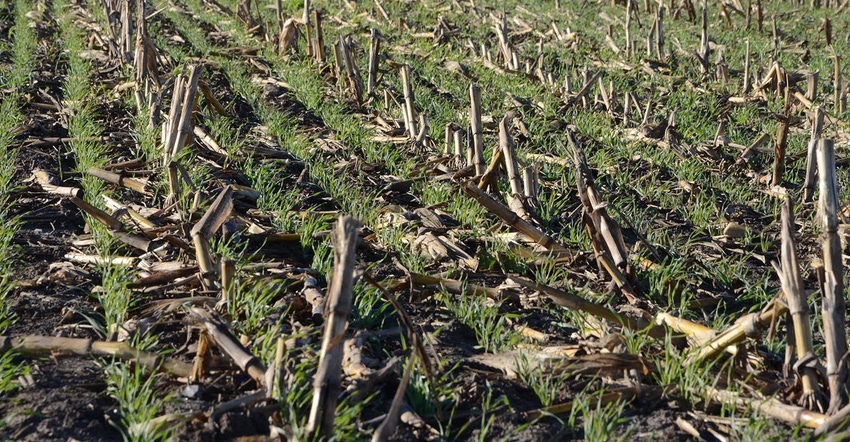February 17, 2021

The financial impact of conservation tillage and cover crop usage among Midwestern corn and soybean farmers is examined in the report, Conservation’s Impact on the Farm Bottom Line.
“Our analysis adds to a growing body of research on the profitability of agricultural conservation practices and helps farmers better understand what they can expect when they adopt these practices,” said Maria Bowman, Ph.D., lead scientist at Soil Health Partnership, which collaborated with the Environmental Defense Fund and K-Coe Isom to prepare the report.
Three highlights from the report:
Conservation tillage reduces operating costs.
Cover crops can be part of a profitable system, especially as experience grows.
Success with conservation practices is optimized with a target, stepwise, tailored approach.
The analysis also found that farmers achieved profitable conservation systems by aiming to address specific management challenges with in-field conservation practices, such as improving soil structure as a way to improve water management and reduce erosion, and minimizing passes across the field to save time, machinery and overhead costs.
“There is risk involved in adopting new practices and farmers need financial information that indicates what they might expect financially from adopting conservation practices,” said Vincent Gauthier, research analyst at EDF. “Working with farmers to understand how the adoption of conservation tillage and cover crops impacts their bottom line can help pave the way for other farmers and inform new kinds of financial support that align with the financial dynamics of these practices.”
The report included a detailed budget analysis of seven Midwest farmers growing corn and soy with at least three years’ experience with cover crops or conservation tillage.
Brian Ryberg is one of the farmers highlighted in the report. Brian and his wife, Sandy, farm 5,300 acres in south-central Minnesota, where they grow corn, soybeans and sugar beets. Ryberg has adopted strip-till, no-till and cover crops in his operation. His conservation goals included saving costs and improving soil health through reduced disturbance and increased cover.
“By using conservation tillage practices and cover crops, we’ve been able to save substantially on fuel, equipment and repair costs,” Ryberg said. “These practices have had many other benefits including improved water holding capacity, more water infiltration, improved soil structure, better drained seed beds and weed suppression.”
Ryberg uses an annual ryegrass, hairy vetch, turnip and rapeseed cover crop mix on almost 3,000 acres. His approach to adopting cover crops across these acres was gradual, as he tested different methods of seeding.
“It can take time to get it right with cover crops,” he said. “So testing seed mixes and application methods on a piece of your farm can help prevent large costs in your budget as you dial in the right system for your soil.”
Click the download button below to download a report summary.
Source: Environmental Defense Fund, which is solely responsible for the information provided and is wholly owned by the source. Informa Business Media and all its subsidiaries are not responsible for any of the content contained in this information asset.
You May Also Like




